Choosing a digital asset management (DAM) system can be daunting. Especially as you sort through complex requirements and a sea of potential vendors. Ntara is here to demystify the process and help you navigate this exciting step forward for your business.
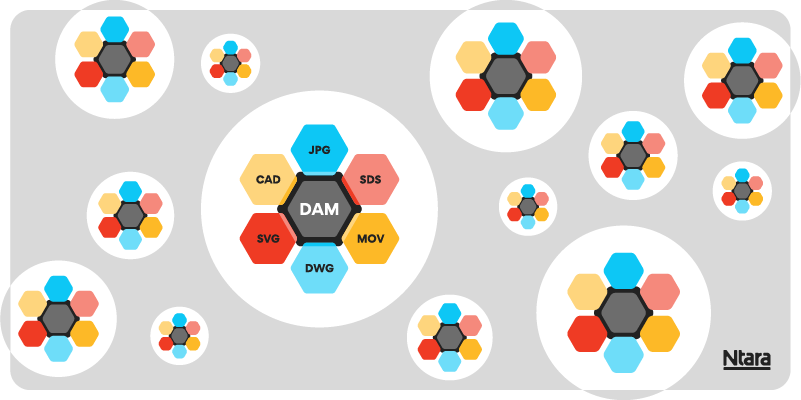
Challenges in selecting DAM software
The DAM software landscape is diverse and rapidly changing. It’s also been around for ages, even longer than product information management (PIM) software. As a result, the DAM space is crowded. New vendors pop up daily, and even with carefully crafted requirements, you could face 45+ viable options.
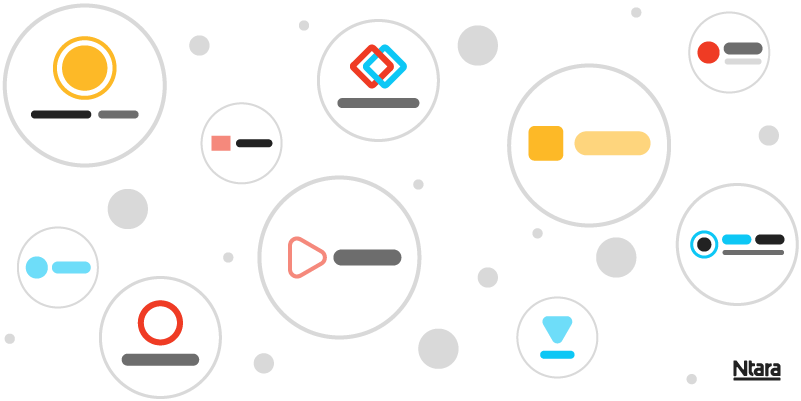
What’s more: only some DAM systems are a great fit for product purposes. Some tools are better suited for organizations like museums and libraries—not product manufacturers and brands. As someone who isn’t yet an expert in DAM software, how can you discern the difference?
On top of all this, selecting and deploying a business-critical DAM system can also mean:
- Tedious evaluation process
Identifying, contacting, and communicating with vendors takes time - No context for evaluation criteria
You’re unsure which questions to ask and what makes a good fit - Competing priorities
Your primary work doesn’t stop so you can select a DAM system
Consider your digital asset management maturity
The way you manage your digital assets typically falls within five phases of maturity. Before you choose DAM software, it helps to assess your current maturity phase and future goals. This will guide your overall strategy and help you select a DAM software platform that plays to your strengths.
For example, some DAM software vendors offer a global platform with robust content publishing workflows. While perfect for some organizations, this complexity could burden others who need a more straightforward user experience. Understanding your desired DAM maturity helps align your selection from the start.
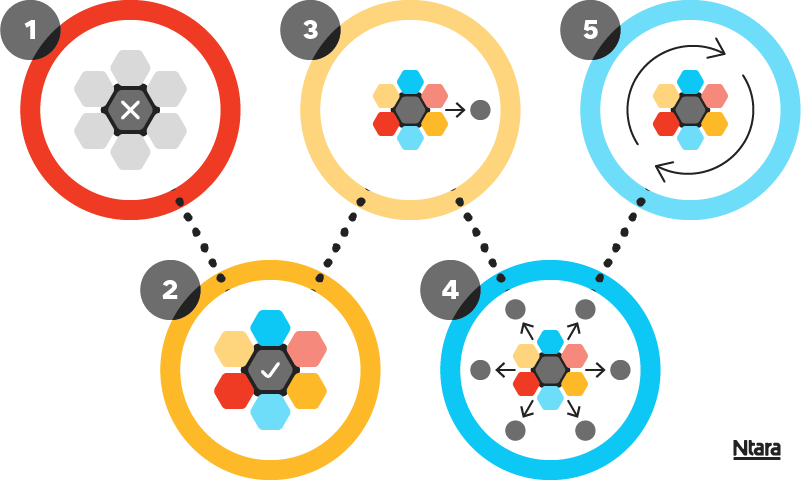
- No DAM in place
- Digital assets are centralized in a DAM, but manual processes are still required to get them to other places
- Digital assets are in a DAM and they are being syndicated to at least one marketing channel
- Digital assets in the DAM are being syndicated to many channels
- Digital asset strategy is being informed by a Digital Shelf Analytics feedback loop
Steps to DAM software selection
Selecting the right DAM system requires a comprehensive approach. You need a cross-departmental view of DAM requirements and how those needs align with the capabilities and cost of each software platform.
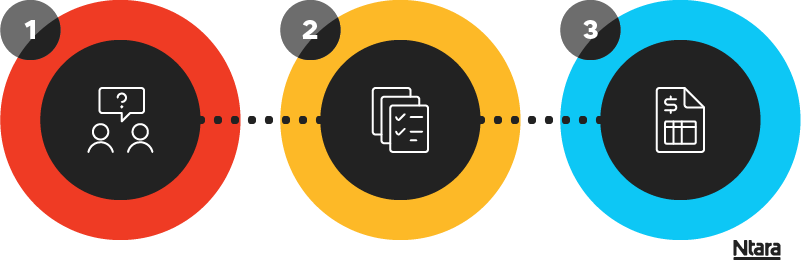
Step 1. Gather requirements
Talk with users and leaders across your organization—including sales, marketing, legal, product development, and ecommerce—to gather requirements. Some needs relate to the technology itself, while others point to how you’ll set up and use the software. It is critical to speak with people in every department that will contribute to your overarching digital asset management processes.
Step 2. Evaluate capabilities
DAM platforms offer a wide array of capabilities. What are your non-negotiables?
For example, digital rights management (DRM) is critical to many manufacturers and brands. Consider a CPG manufacturer selling baby diapers, featuring an advertisement with an infant model. Chances are, there’s a contract dictating how, where, and for how long the infant’s image can be used. Manufacturers often need DRM to meticulously track these details and avoid potential legal disputes or breaches of contract.
Other must-have DAM capabilities could include:
- Content delivery network (CDN) to publish content and link URLs easily
- Image transformations to generate specific outputs on the fly (e.g., images formatted for Grainger or Amazon)
- Ability to attach metadata to fully describe, catalog, and curate assets
- Integrations with your other essential technology tools (e.g., ERP, CMS, ecommerce, PIM)
Read more about what DAM can do for your business.
Step 3. Align on cost
Anyone can look at a Garner or Forrester report and pick the top-ranked vendor. But that’s a risky approach. You might end up overspending on a DAM software that includes features you’ll never use.
That’s why you need strategic alignment between requirements, capabilities, and cost. This holistic view empowers you to prove the value of DAM – and makes it a lot easier to gain full stakeholder support.
One more cost factor to consider is technical debt. Consider the bigger picture of your digital transformation journey and what other technical projects might be in the queue. For example, are you also considering a PIM implementation? If so, it’s wise to see how PIM + DAM intersect to help you get a faster ROI.
Get more insights into how PIM + DAM intersect to supercharge the product experience.
Get help with DAM software selection
It’s critical to choose DAM software that meets your specific business needs. It’s also tough to do if you don’t work in DAM or PIM every day.
That’s where Ntara can help. Our data experts support global, multi-lingual deployments with billions of data points and digital assets. We know the right questions to ask to help your business navigate this important software selection.
Here’s how our process works:
Ntara applies a standardized, objective evaluation of potential software platforms. We match those findings with a thorough understanding of your specific business goals and DAM requirements.
We use qualitative research, talking to stakeholders throughout your company to identify relevant criteria, technical requirements, and implementation preferences. We then contact platform vendors on your behalf, saving you the time, effort, and headache of fielding inquiries.
We work with you to set up “entrance criteria” for an initial set of DAM software contenders. We select them based on platform cost, development language, partner model, deployment options, and more.
Short-listed vendors score themselves on each requirement, on a scale from “not available” to “best in class.” Then, it’s your turn to grade each vendor on their features. Our technical team rounds out the analysis, doing a deeper technical dive into each requirement. We keep all scores sequestered until they’re completed to avoid bias in the process.
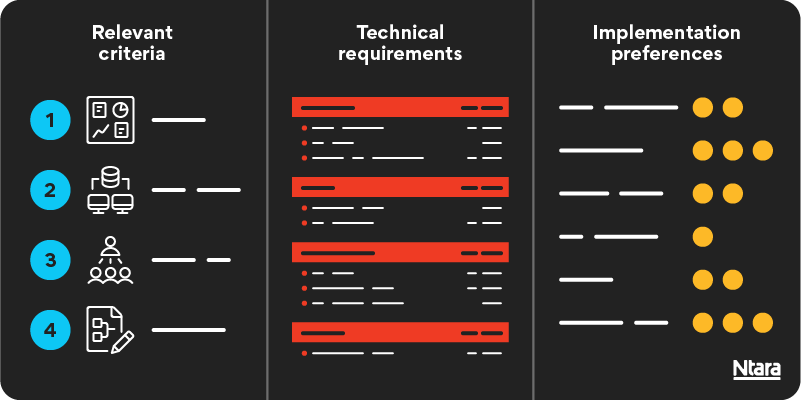
We designed this process to help you get past the marketing hype and determine which platform features align best with your business. It’s one thing to choose DAM software that makes the front page of Forrester or Gartner (though their analysis matters). It’s another to know which platform best suits your unique needs.
What you get from a DAM software selection
By the end of this project, you’ll have all the data you need to select a DAM software, including:
Business requirements document
What your business needs from DAM software, complete with decision-maker signoff
Double-blind vendor scorecard
Three-tier evaluation of each platform’s ability to meet your business requirements
ROI calculator
Framework for tracking the time and money your DAM implementation helps save
Findings & recommendations
Roadmap for getting from where you are today to where you want to be with DAM
If you’d like help with your DAM software selection, get in touch.